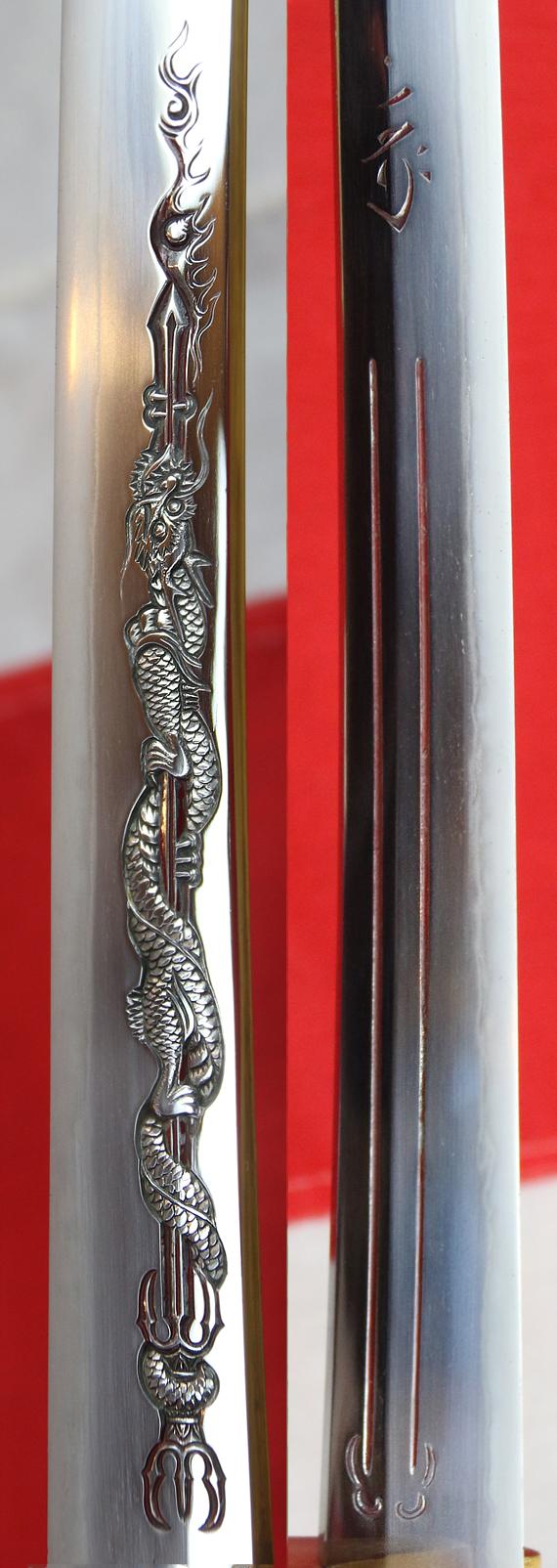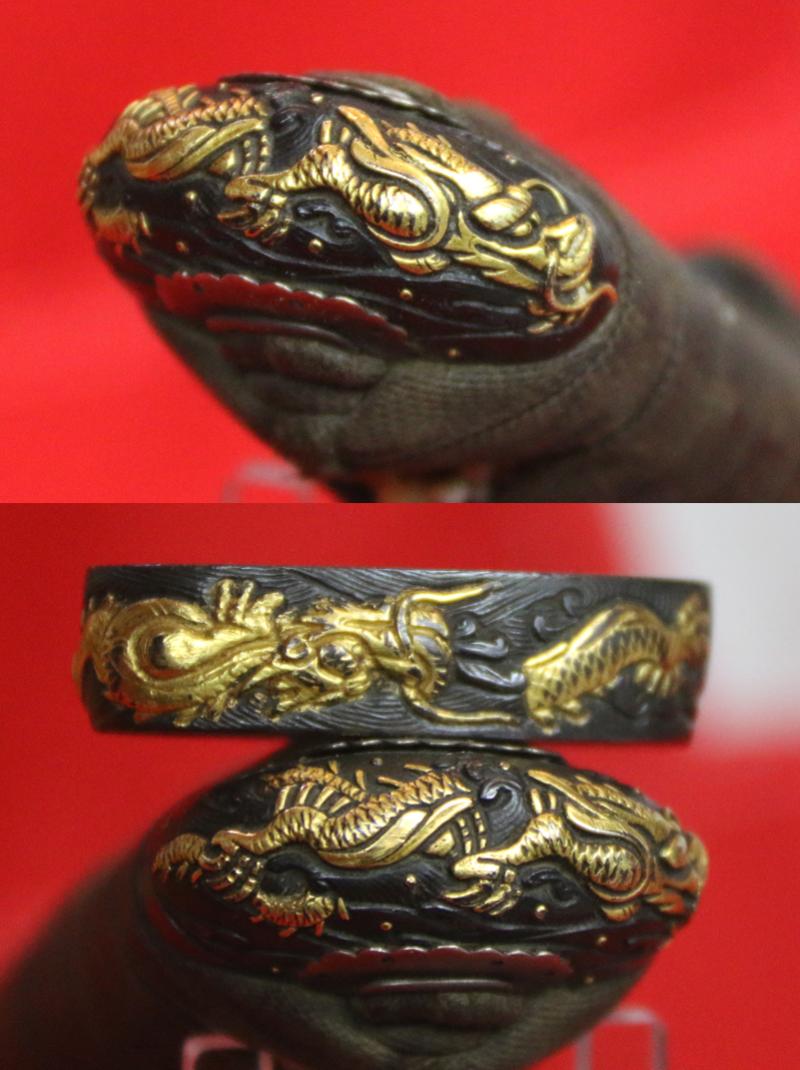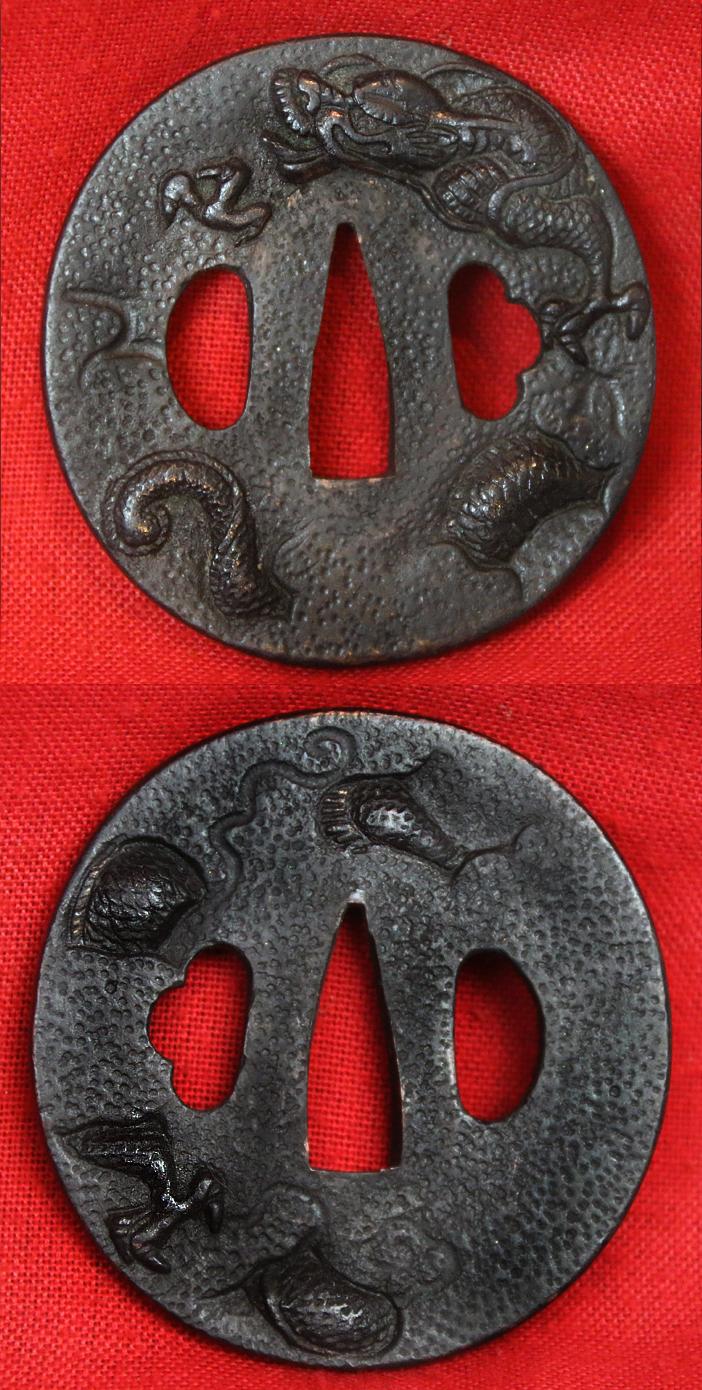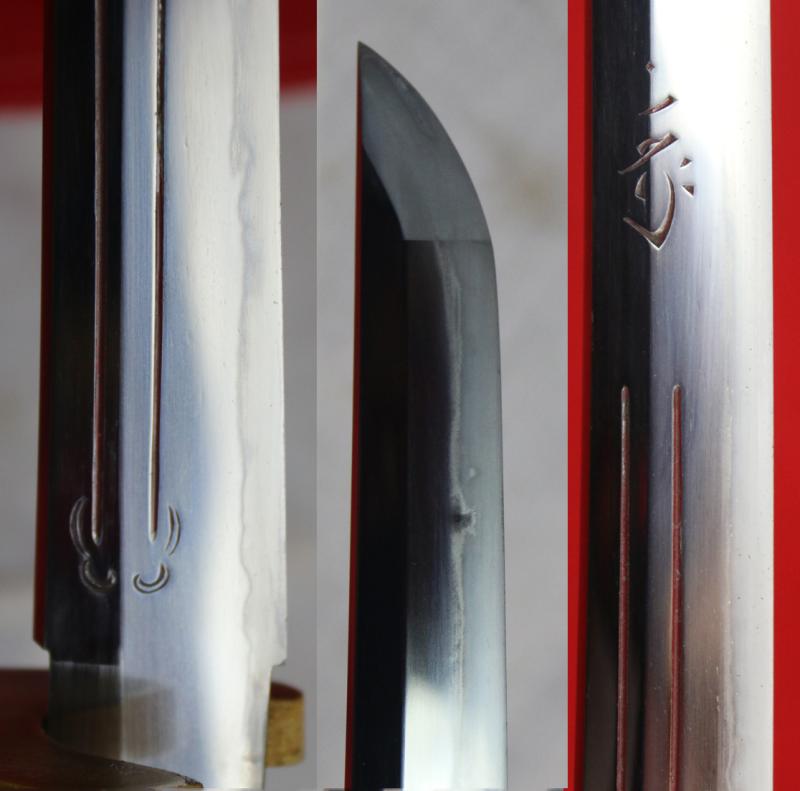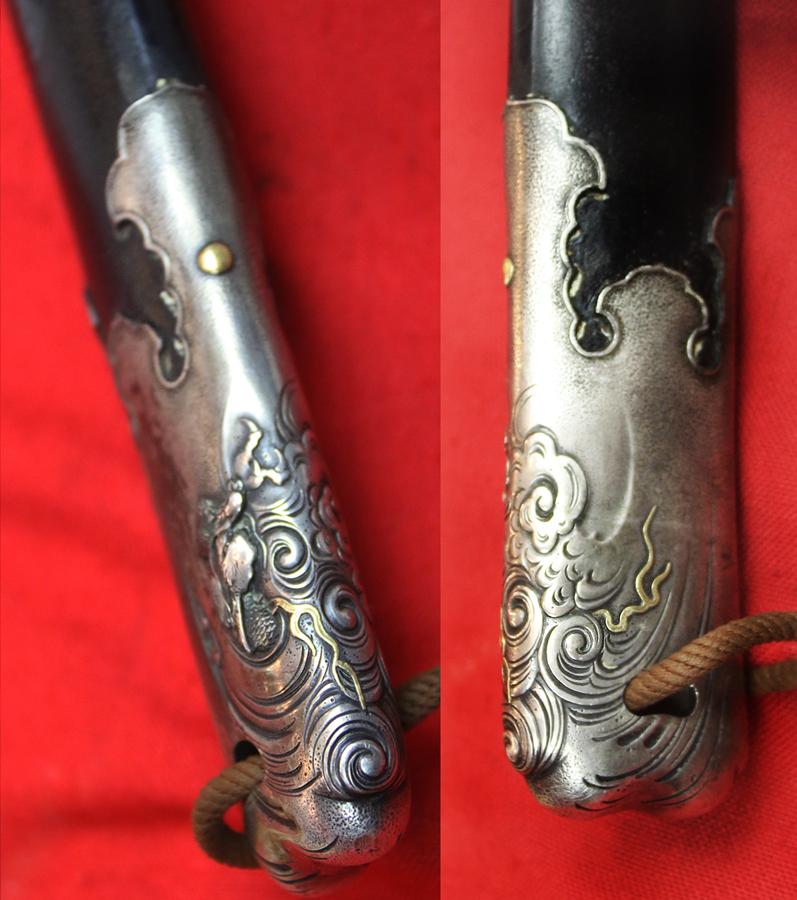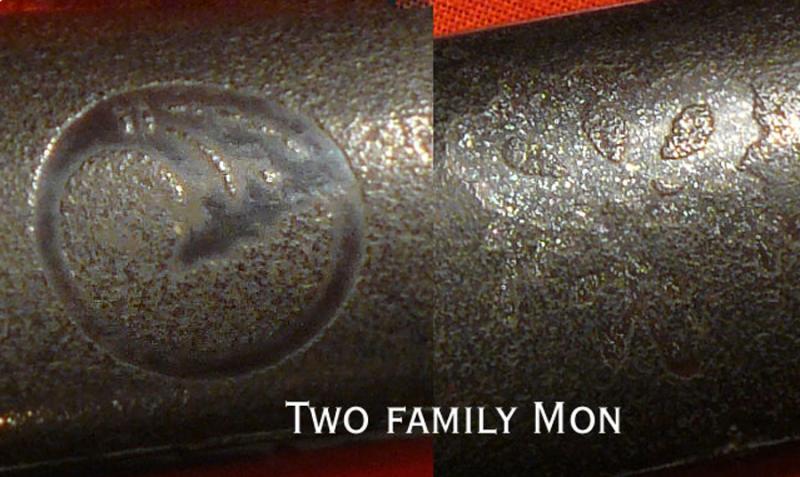A Simply Magnificent 17th century Museum Quality Edo Period 'Dragon' Chisa Katana
Tadatsuna School, shinto era circa 1690.
Goto school takebori 'dragon' in clouds, of pure hammered gold over shakudo, koshirae, blade by the school of Tadatsuna of Osaka, progenitor of a highly regarded line who were especially notable for their carving of fine horimono on blades. It has a breathtaking quality chisseled horimono blade, with a dragon entwined with Buddhist varjira and ken on one side, the kurikara, and bo hi with Buddhist bonji on the other. the saya has two clam mon, one the Seigaiha mon, plus a superb sayajiri in silver with dragon and clouds with gold. The tsuba is superb a round tettsu plate with an interspersed dragon flying between one side and another Sunamoguri ryu zu (dragon diving in the sand, a pair of dragon menuki under the original Edo tsukaito. Sanskrit characters (or rather pictograhs) used on swords are called Bonji or Shuji. They are readings of the various incarnations of Buddha. Tadatsuna was a swordsmith from the Asai family, and hails from Banshu Himeji. He claimed lineage back to the koto Awataguchi smith Kunitsuna, and worked for a time in Kyoto. After moving to Osaka with his son, he obtained first the title of Omi no Daijo, then was promoted to Omi no Kami.
His son was named Asai Mandayu, and went on to become the Nidai Tadatsuna and surpassed even his talented father in skill. He would go on to be known as one of the best of the Osaka swordsmiths, and was also famous for his horimono which decorated his swords and the works of his father. Both father and son received rankings for the cutting prowress of their swords, wazamono, and ryo-wazamono respectively. As well Fujishiro ranks them at Jo saku, and Jo-jo saku. Work of this school is much admired and the quality of this swords fittings show just how much this blade was revered when it was fitted for wear and use.
The quality of the original Edo mounts, lacquer saya, and blade is totally superb, with gold silver and patinated copper koshirae of remarkable beauty. The blade is immensely powerful, and stunningly engraved with very high quality strong horimono of dragon and bonji. The bladeis absolutely wondrous The saya is decorated within the lacquer with twin family mon.
The most common blade cutting edge lengths for Chisa katana was approximately eighteen to twenty-four inches. They were most commonly made in the Buke-Zukuri mounting (which is generally what is seen on katana and wakizashi). The chisa katana was able to be used with one or two hands like a katana (with a small gap in between the hands) and especially made for double sword combat a sword in each hand. It was the weapon of preference worn by the personal Samurai guard of a Daimyo Samurai war lord clan chief, as very often the Daimyo would be more likely within his castle than without. The chisa katana sword was far more effective a defence against any threat to the Daimyo's life by assassins or the so-called Ninja when hand to hand sword combat was within the Castle structure, due to the restrictions of their uniform low ceiling height. The hilt was usually around ten to eleven inches in length, but could be from eight inches or up to twelve inches depending on the Samurai's preference.
The blade is 22 inches long from tsuba to tip
Special offer item, part one of a personal private collection, sourced from a former Far Eastern specialist fine samurai sword collector
Code: 24244
12770.00 GBP




